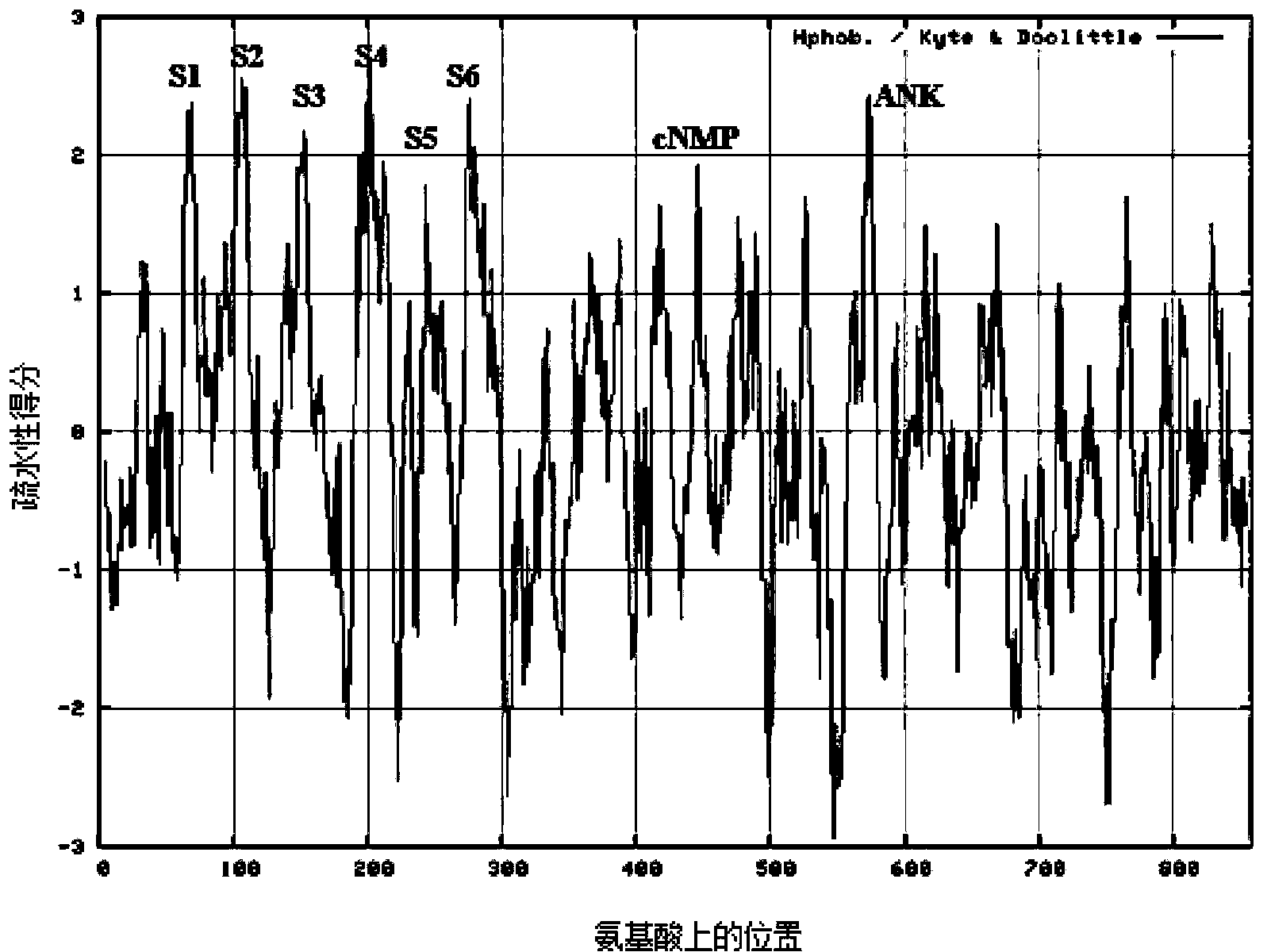A potassium ion channel protein gene, its encoded protein and its application
A potassium ion channel and gene technology, applied in the field of potassium ion channel protein gene, can solve the problems of reducing food production and restricting agricultural production, etc.
- Summary
- Abstract
- Description
- Claims
- Application Information
AI Technical Summary
Problems solved by technology
Method used
Image
Examples
Embodiment 1
[0029] Cloning and analysis of embodiment one SeAKT1 gene cDNA
[0030] Salicornia total RNA extraction
[0031] Weigh 50mg of fresh salicornia tissue, grind it into powder in liquid nitrogen, quickly transfer the ground material to a centrifuge tube containing 1ml trizol reagent, shake and mix well; add 0.2ml chloroform, shake vigorously for 15s, and place at room temperature for 5min ; 4°C 12000r / min, 10-15min, take the supernatant; transfer the supernatant to a new centrifuge tube; add 0.5ml isopropanol, mix well, room temperature 10min; 4°C, 12000r / min, centrifuge 10min; Discard the supernatant, add 1ml ice-cold 70% ethanol (freshly prepared), wash the precipitate; 4°C, 7500r / min, 5min; discard the supernatant, dry at room temperature (not too dry), add 20μl RNase-free ddH 2 O, fully dissolve the RNA, and store at -70°C for later use. 1% agarose gel electrophoresis was used to detect the quality of RNA extraction. The results showed three typical RNA band patterns of 28...
Embodiment 2
[0071] Example 2 Analysis of SeAKT1 expression level under different treatment conditions
[0072] One week after the germination of salicornia seedlings, they were transferred to different petri dishes and treated for 48 hours. 4 layers of filter paper were laid on the bottom of the culture dish, and normal and potassium deficient (as Ca 2+ Alternative), 100mM NaCl and 1 / 2 Hoagland nutrient solution of potassium deficiency + 100mM NaCl. Four weeks after Salicornia germinated, 5×4 seedlings with consistent growth were selected and transferred to 4 hydroponic containers for treatment for 48 hours. Add equal volumes of normal and potassium-deficient (as Ca 2+ Replacement), 700mM NaCl and 1 / 2 Hoagland nutrient solution of potassium deficiency + 700mM NaCl, and regular aeration.
[0073] After 48 hours, 0.05 g of salicornia seedlings and mature seedlings with the same growth were weighed to extract total RNA and cDNA was synthesized. The method was the same as in Example 1. Us...
Embodiment 3
[0080] Example 3 The acquisition of SeAKT1 gene transgenic Arabidopsis
[0081] One. SeAKT1 gene plant expression vector construction
[0082] ① Extraction of pBI121 expression vector plasmid and pMD18T-SeAKT1 plasmid. Plasmids were extracted using the operating steps of the Plasmid Mini-Extraction Kit (SK8192) of Sangon Bioengineering Co., Ltd., and the specific method is shown in the instruction manual.
[0083] ② Obtaining the junction fragment between SeAKT1 coding region and expression vector. The pMD18-SeAKT1 and pBI121 plasmids were digested with XbaI and SacI respectively to obtain a 2577bp SeAKT1 coding region fragment and a 12947bp pBI121 vector large fragment for ligation. The above two fragments were ligated with T4 ligase, transformed into Escherichia coli DH5α, and clones with the correct length were screened out after detection by PCR and enzyme digestion, and the plant recombinant expression vector pBI121-SeAKT1 of the SeAKT1 gene was obtained. The enzyme di...
PUM
 Login to View More
Login to View More Abstract
Description
Claims
Application Information
 Login to View More
Login to View More - R&D Engineer
- R&D Manager
- IP Professional
- Industry Leading Data Capabilities
- Powerful AI technology
- Patent DNA Extraction
Browse by: Latest US Patents, China's latest patents, Technical Efficacy Thesaurus, Application Domain, Technology Topic, Popular Technical Reports.
© 2024 PatSnap. All rights reserved.Legal|Privacy policy|Modern Slavery Act Transparency Statement|Sitemap|About US| Contact US: help@patsnap.com










